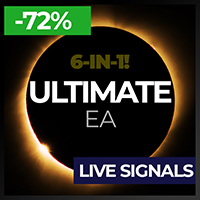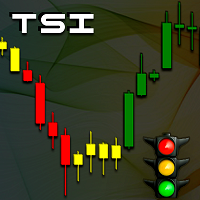Technical Indicators for MetaTrader 5
Shopping cart
MetaTrader 5
Top Rated Products MT5
Overview
Probabilistic Price Predictor (QuantBreak Probability Suite) – The Bayesian Edge for Smarter Trading
Unlock the Power of Probability in Market Forecasting.
The Probabilistic Price Predictor is a revolutionary trading indicator that applies Bayes' Theorem to forecast breakout probabilities with mathematical precision. Instead of relying on traditional, rigid indicators, QuantBreak uses adaptive probability calculations to identify high-probability trade setups based on historical price action and conditional statistics.
Whether used as a standalone system or in conjunction with other indicators, QuantBreak equips traders with real-time probability metrics, allowing for data-driven decision-making in an unpredictable market.
Why Choose Probabilistic Price Predictor?
? Bayesian Probability Engine – Dynamically updates probability estimates to provide statistically relevant trade signals.
? Higher Timeframe EMA Confluence – Incorporates HTF EMA analysis to detect market bias and filter low-quality setups.
? Smart Breakout Forecasting – Computes the probability of bullish and bearish breakouts based on how price interacts with prior highs and lows.
? Standalone or as a Confirmation Tool – Works independently or as a confirmation layer for RSI, Bollinger Bands, Smart Money Concepts (SMC), and other strategies.
? Scientific Trading Panel – Displays real-time probability distributions, trend bias, and empirical price action metrics for enhanced clarity.
? Universal Market Compatibility – Works across Forex, Stocks, Commodities, and Indices, on all timeframes.
Why Probability Works in Predicting Market Behavior
Unlike solid, fixed-rule indicators, probability-based models adapt to the dynamic nature of financial markets. Here’s why probabilistic forecasting is superior:
? Markets Follow Stochastic Processes – Price movements exhibit random yet structured behavior, making probability models more effective than static indicators.
? Bayesian Learning Updates with New Information – Instead of rigid signal conditions, QuantBreak refines probabilities as new data arrives, improving accuracy.
? Conditional Probability Accounts for Context – Unlike traditional indicators that rely on absolute values (e.g., RSI > 70), QuantBreak factors in prior price behavior to assess the likelihood of future moves.
? Probability Reduces Noise & False Signals – Solid indicators can generate false signals in choppy conditions, whereas probability-based models filter randomness by considering multiple conditions before confirming a move.
? Traders & Institutions Think in Probabilities – Professional quant traders and hedge funds do not trade based on rigid indicators; they trade based on probability-weighted scenarios—just like QuantBreak.
With Probabilistic Price Predictor, you're not just reacting to market movements—you’re anticipating them with quantitative reasoning.
Quantitative Features – The Edge You Need
? Empirical Bayesian Modeling – Calculates the likelihood of upward/downward breakouts based on past statistical patterns.
? Market-Adaptive Learning – The probability distribution updates in real-time, ensuring relevance to current market conditions.
⚡ No Repainting & No Lagging Signals – Works in real-time, with no repainting or delayed signals.
? Enhanced Risk Management – Allows you to fine-tune stop-loss and take-profit levels based on probability estimates.
? Quantitative Backtesting Ready – Use historical probability distributions to validate your strategies before deploying in live markets.
Understanding the Conditional Probabilities
This indicator calculates the likelihood of price breaking above or below previous key levels based on past price action. It applies Bayes’ Theorem to determine how often certain price patterns lead to breakouts.
Here’s what each probability means (Examples):
? P(Break High | Previous Bar = Bullish) = 62.94%
→ If the previous bar was bullish (green), there is a 62.94% probability that the current bar will break above the previous high.
? P(Break Low | Previous Bar = Bullish) = 50.26%
→ If the previous bar was bullish, there is a 50.26% probability that the current bar will break below the previous low.
? P(Break High | Previous Bar = Bearish) = 34.36%
→ If the previous bar was bearish (red), there is a 34.36% probability that the current bar will break above the previous high.
? P(Break Low | Previous Bar = Bearish) = 72.50%
→ If the previous bar was bearish, there is a 72.50% probability that the current bar will break below the previous low.
? How to Use These Probabilities?
✅ If P(Break High | Bullish) > P(Break Low | Bullish) → The market has a higher probability of continuing upward.
✅ If P(Break Low | Bearish) > P(Break High | Bearish) → The market has a higher probability of continuing downward.
✅ If the probabilities are close to 50%, expect choppy or range-bound market conditions.
How to Use Probabilistic Price Predictor in Your Trading?
✅ Breakout Traders: Identify high-probability breakout zones with statistical confirmation.
✅ Trend Followers: Use HTF EMA bias to ensure trades align with the macro trend.
✅ Mean Reversion Traders: Detect false breakouts to avoid unnecessary stop-outs.
✅ Scalpers & Swing Traders: Adjust probability filters for short-term or long-term market dynamics.
? Get the Quantitative Edge & Trade Smarter!
Ditch the guesswork. Trade based on probability, not emotions.
? Download QuantBreak Probability Suite today and start making data-driven trades!





